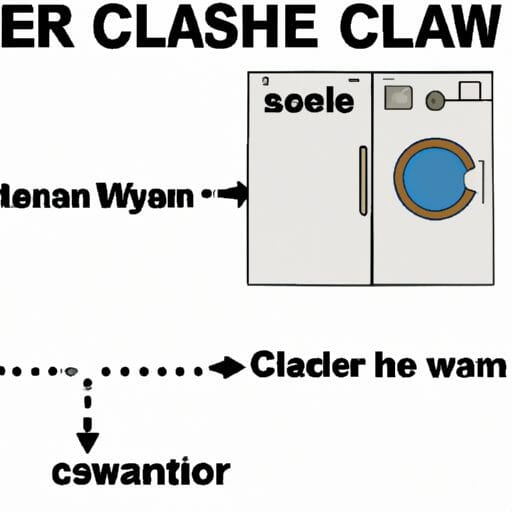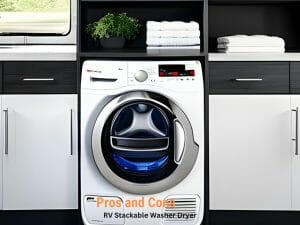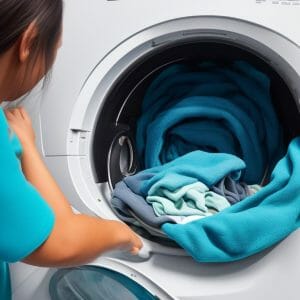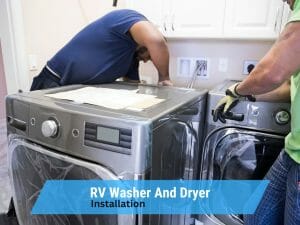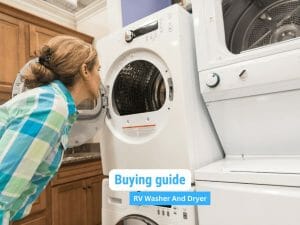How to Clean and Maintain an RV Washer and Dryer
Imagine stepping into your RV, ready for a relaxing vacation on the open road. But wait, your washer and dryer system is acting up! Don’t fret, because, in this article, we will guide you through the essential steps to clean and maintain your RV washer and dryer.
With a few simple tools and a regular cleaning routine, you can ensure optimal performance and troubleshoot any common issues that may arise.
So let’s dive in and keep your laundry appliances running smoothly, allowing you to enjoy your travels worry-free.
Key Takeaways
Understanding the RV Washer and Dryer System
Understanding the RV washer and dryer system is essential for properly maintaining and using them. When it comes to RV washer and dryer installation, it is important to follow the manufacturer’s instructions carefully. Ensure that the water and electricity connections are secure and that the dryer vent is properly installed to avoid any potential hazards.
Troubleshooting common problems in the RV washer and dryer system can save you time and money. If your washer is not draining, check for clogged filters or kinked hoses. For dryer issues, confirm that the lint trap is clean and the vent is not blocked.
Regularly cleaning and maintaining your RV washer and dryer will ensure their longevity and keep them operating at their best.
Essential Tools for Cleaning and Maintenance
When it comes to keeping your RV clean and well-maintained, there are a few key points to consider.
First, you’ll need to have the right cleaning supplies on hand to tackle any mess. From all-purpose cleaners to window cleaners and disinfecting wipes, having these must-have cleaning supplies will make your cleaning tasks much easier.
Additionally, it’s important to have a maintenance checklist that includes items such as checking the seals, inspecting the roof, and maintaining the plumbing system.
Lastly, learning and implementing time-saving cleaning techniques will help you efficiently clean your RV, giving you more time to enjoy your travels.
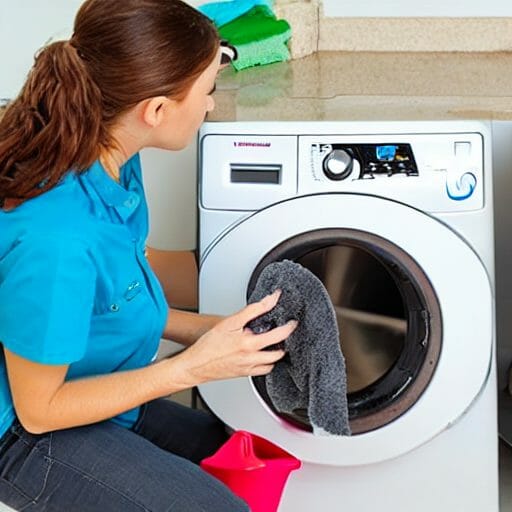
Must-Have Cleaning Supplies
To effectively clean and maintain your RV washer and dryer, you’ll need a few must-have cleaning supplies.
Start by creating a cleaning schedule to ensure regular maintenance.
For general cleaning, you’ll need a mild detergent specifically designed for RVs. This will help remove dirt and grime without damaging the surfaces.
To tackle stubborn stains, keep a stain remover on hand. Look for one that is safe for your specific washer and dryer materials.
Additionally, invest in a soft bristle brush or sponge to scrub away any residue or buildup.
For lint removal, a lint brush or lint roller is essential.
Finally, don’t forget to have a microfiber cloth or towel for wiping down surfaces and a vacuum cleaner for thorough cleaning.
With these supplies, you can keep your RV washer and dryer in top-notch condition.
Maintenance Checklist Items
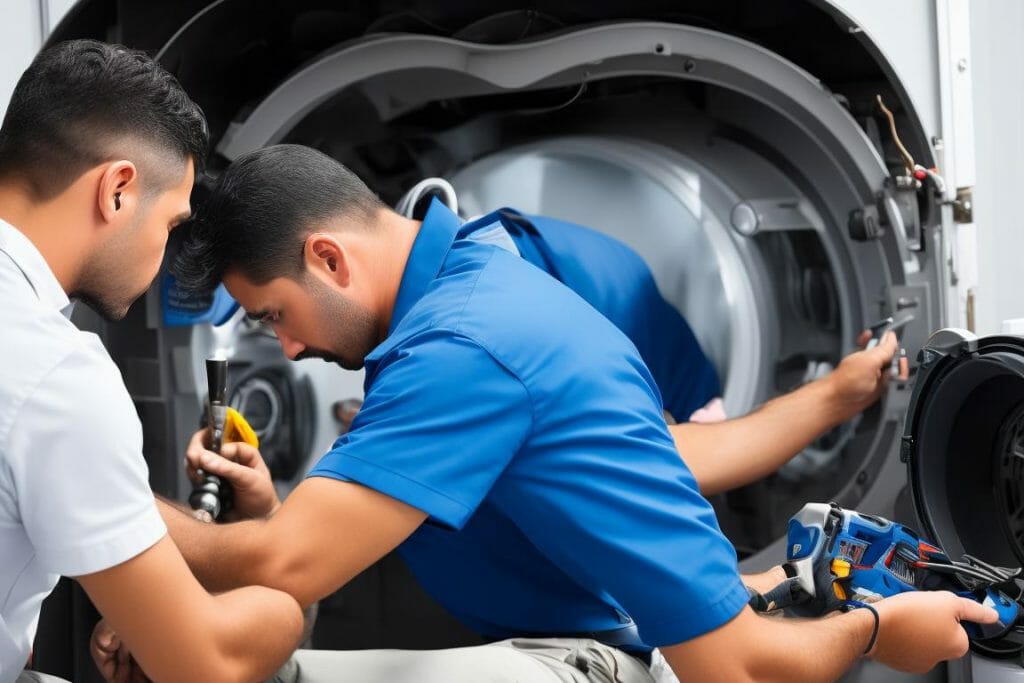
Make sure you have a cleaning schedule for regular maintenance of your RV’s washer and dryer. Keeping up with maintenance is crucial to ensure the longevity and efficient operation of your appliances. Here is a maintenance checklist to follow for your RV’s washer and dryer:
- Clean the lint filter regularly to prevent clogs and improve drying efficiency.
- Inspect the hoses for any signs of wear or leaks, and replace them if necessary.
- Check the drum for any objects that may have gotten stuck, as these can cause damage during operation.
- Use a descaling agent to remove mineral deposits from the washing machine’s drum and hoses.
- Lubricate the moving parts, such as the door hinges and dryer drum rollers, to reduce friction and prevent squeaking.
- Inspect the electrical connections and ensure they are secure.
In addition to regular maintenance, it’s important to know some troubleshooting tips. If your washer or dryer is not functioning properly, check the power supply, circuit breaker, and water supply. Also, familiarize yourself with the user manual for specific troubleshooting instructions.
Time-Saving Cleaning Techniques
Save time cleaning by using quick and efficient techniques for maintaining the cleanliness of your RV’s washer and dryer.
When it comes to deep cleaning your RV’s washer and dryer, it’s important to start with the basics. Begin by wiping down the exterior surfaces of the appliances with a damp cloth and mild cleaning solution.
For stain removal, mix equal parts of water and vinegar and apply it to any stubborn stains on the interior drum or agitator. Let the solution sit for a few minutes before scrubbing with a soft brush.
To prevent odors, run a cycle with hot water and a cup of white vinegar every few months. Additionally, clean the lint trap after every use to improve drying efficiency.
Regular Cleaning Routine for Optimal Performance
To ensure optimal performance of your RV washer and dryer, it’s crucial to follow a regular cleaning routine. This discussion will focus on three key points:
Preventing Buildup and Odors
Regularly cleaning the RV washer and dryer can help prevent buildup and eliminate odors. Here are four essential steps to ensure your appliances stay in optimal condition:
- Inspect and clean the lint trap: Start by removing the lint trap and clearing away any lint or debris. Use a soft brush or vacuum to clean the area thoroughly.
- Run a self-cleaning cycle: Many RV washers and dryers have a self-cleaning function. Follow the manufacturer’s instructions to activate this cycle, which will help remove any mold or mildew buildup.
- Use vinegar and baking soda: To eliminate odors, add a cup of white vinegar to the washer drum and run a hot water cycle. Then, sprinkle baking soda inside the dryer drum and run another hot cycle.
- Wipe down the exterior: Don’t forget to clean the exterior surfaces of your appliances. Use a mild detergent and a soft cloth to remove any stains or dirt.
Choosing the Right Products
Now that you understand how to prevent buildup and odors in your RV washer and dryer, it’s important to choose the right products for cleaning and maintenance.
When it comes to cleaning the interior of your appliances, you’ll want to use mild, non-abrasive cleaners that are safe for the materials used in RV washers and dryers. Look for products specifically designed for RV use, as they are formulated to remove dirt and grime without causing damage.
Avoid using bleach or harsh chemicals, as they can corrode the components of your washer and dryer over time. Additionally, consider using a washing machine cleaner or descaler to remove any mineral deposits that may accumulate inside the machine.
Maintaining Proper Ventilation
Proper ventilation is crucial for preventing moisture and mold buildup in your RV’s laundry area. Here are four ways you can improve air circulation in this space:
Troubleshooting Common Issues With RV Washers and Dryers
If your RV washer and dryer are not working properly, here are some common issues you may encounter and how to troubleshoot them.
First, let’s address power issues. If your washer or dryer is not turning on, check if the power cord is securely plugged into a working outlet. Ensure that the breaker for the washer and dryer is not tripped. If the power supply is fine, but the machines still won’t turn on, it could be a faulty control board or a blown fuse. Consult the user manual or contact a professional for further assistance.
Another common issue is water leakage. If you notice water pooling around the washer or dryer, check for any loose or damaged hoses. Tighten the connections or replace the hoses if necessary. Additionally, inspect the water inlet valve for any leaks or blockages. Clean or replace it as needed.
Regularly maintaining and troubleshooting these issues will help ensure the optimal performance of your RV washer and dryer.
Cleaning the Lint Trap and Ventilation System
Regularly checking and clearing the lint trap and ventilation system is essential for the optimal performance and safety of your RV laundry appliances.
Here are four steps to effectively clean the lint trap and ventilation system in your RV washer and dryer:
Maintaining the Water Lines and Drainage System
To keep the water lines and drainage system in good working order, make sure you regularly check for any leaks or clogs.
Water line troubleshooting is an important aspect of maintaining your RV’s plumbing system. Start by inspecting all visible water lines for any signs of leakage. Look for wet spots or drips under sinks, around faucets, and near the water heater. If you notice any leaks, repair them promptly to prevent further damage.
In addition, it is crucial to regularly clean and maintain your RV’s drainage system. Check the drains for any clogs by using a plunger or a drain snake. Remove any debris or hair that might be blocking the flow of water.
Long-term Storage and Winterization Tips
When storing your RV for an extended period or preparing it for winter, don’t forget to properly drain and protect the water lines and drainage system. Neglecting this crucial step can lead to costly repairs and damage.
Here are four important long-term storage tips and winterization techniques to ensure your RV stays in optimal condition:
- Drain all water from the RV’s fresh water tank, water heater, and plumbing system. Use the RV’s built-in water pump or an air compressor to remove any remaining water.
- Add RV antifreeze to the plumbing system to prevent freezing and potential burst pipes. Make sure to follow the manufacturer’s instructions and use the appropriate amount.
- Disconnect and drain all hoses, including the sewage hose. Clean and store them properly to prevent contamination and damage.
- Protect the RV’s exterior from harsh winter elements by covering it with a specialized RV cover or storing it in a climate-controlled facility.
Frequently Asked Questions

How Often Should I Clean the Lint Trap and Ventilation System in My RV Washer and Dryer?
To keep your RV washer and dryer running smoothly, clean the lint trap and ventilation system regularly. This helps prevent blockages and ensures proper airflow, reducing the risk of overheating and other issues.
What Are Some Common Issues That Can Arise With RV Washer and Dryers, and How Can I Troubleshoot Them?
Common issues with RV washers and dryers include clogs, leaks, and electrical problems. To troubleshoot, check for blockages in hoses, tighten connections, and inspect wiring. Remember to always follow the manufacturer’s instructions for proper maintenance and repair.
Are There Any Specific Cleaning Products or Solutions That I Should Use When Cleaning My RV Washer and Dryer?
To clean and maintain your RV washer and dryer, it’s important to use specific cleaning products designed for these appliances. Regular maintenance, such as cleaning the lint trap and checking for leaks, will ensure optimal performance.
Can I Use My RV Washer and Dryer While on the Road, or Is It Only Meant for Use When Parked?
You can definitely use your RV washer and dryer while on the road. Just make sure to clean the lint trap and ventilation system regularly to prevent any issues. Safe travels!
What Steps Should I Take to Properly Winterize My RV Washer and Dryer Before Storing It for the Winter?
To properly winterize your RV washer and dryer, follow these steps: 1) Drain all water from the system, 2) Clean the interior thoroughly, 3) Disconnect and store hoses, 4) Protect the unit from freezing temperatures. This winterizing process is essential for RV maintenance.
Conclusion
So there you have it, my fellow RV enthusiasts. By now, you should be well-equipped with the knowledge and tools to clean and maintain your RV washer and dryer system.
Remember, regular cleaning and maintenance are the keys to ensuring optimal performance and longevity. Don’t forget to troubleshoot any common issues that may arise, clean the lint trap and ventilation system, and maintain the water lines and drainage system.
And when it comes to long-term storage and winterization, follow our tips for a hassle-free experience.
Happy RVing!

